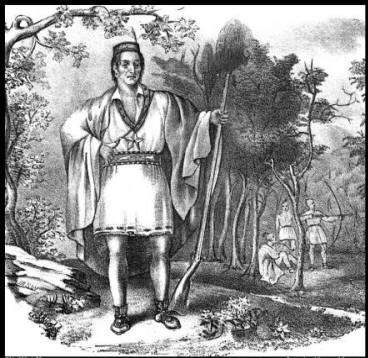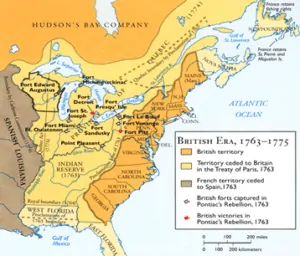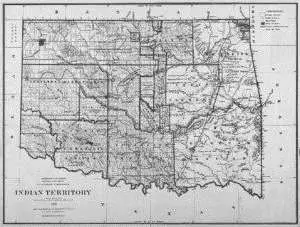American Holocaust Native American Perspective:
Beginning in Europe and still ongoing…..
By Brian Darst
The Holocaust of the Native American People was started in Europe with The Doctrine of Discovery. A quote by Thomas Aquinas in 1271 is as follows “…unbelievers deserve not only to be separated from the church but also… to be exterminated from the world by death.”
These views were widely accepted by the Europeans and also by the Catholic Church. The 1452 Doctrine of Discovery was to perpetuate the looking for more resources and territories for the Sovereign Nations of Europe. In May of 1493 after the discovery of the West Indies and Florida by Christopher Columbus, Pope Alexander VI dictated the Papal Bull Inter-Caetera stating:
“Moreover we command you in virtue of holy obedience that employing all due diligence in the premises, as you also promote nor do we doubt your compliance therein in accordance with your loyalty and royal greatness of spirit- you should appoint to the aforesaid main-land and islands worthy, God fearing, learned, skilled, and experienced men, in order to instruct the aforesaid inhabitants and residents in the Catholic faith and train them in good morals.”
This edict was followed be either the extinction or destruction of many Native People. This was achieved by disease, death, and or complete slavery of Native American People. This edict also created the loss of traditions, speech, clothing, and understanding of Native People to other natives because of the introduction of the Catholic faith due to the influx of missionaries and or Jesuits.
The Southern part of the later to become United States of America and South America was plundered for resources ranging from minerals, wood, stone, gold, and people to help with the expansion of Europe. This was done also to maintain supremacy of said nations including the wars waged between the European nations.
This created the opportunity for the Pilgrims of Britain to seek other lands abroad to escape doctrines and beliefs of both the Protestant and Catholic Churches. In 1620 the Pilgrims came into contact with the Native People of what was to be called New England. Upon the meeting of the indigenous people the Colonists began a peaceful co-existence with the Native People called the Wampanoag. A treaty was then written called The Wampanoag – Pilgrim Treaty which called for the mutual support, common good, and peace among the Colonists and the Wampanoag People. This treaty was to help the Colonists and Wampanoag against any other Native or Foreign threat perceived by the Colonists. During this time of influx of more people from Europe and Britain the estimated population of Native People was between 21,000 to 24,000 in just the Massachusetts Bay and Rhode Island area alone. As more of the people came they brought along with them disease, greed, and the need for more land. In the years that followed Native People lost hunting, fishing, and farm lands to the ever expanding Colonies.
The Small Pox epidemic of 1633-1634 also decimated the native population to almost extinction. After the epidemic there were only 15,000-18,000 Native people estimated to be alive throughout all of New England. A theory was then accepted by the colonists of expansion and possession. They believed that the land owned by Native People was to be theirs and that the only right the Native People had was that of occupancy. It was well believed that the discovering nation or successor could take possession from natives by conquest or purchase.
This belief from many Colonists caused many small outbreaks of conflict to erupt between the Native People and Colonists. One such outbreak was in 1637 known as the Pequot Massacre. William Newell of The University of Connecticut writes:
“The first Thanksgiving was not a festive gathering of Indians and Pilgrims, but rather a celebration of 700 men, women, and children being killed. A green corn dance being observed by the Pequot was interrupted by English and Dutch mercenaries. The Pequot village was burned and anyone escaping the flames were either shot or fell under the sword. The following day the Governor of the Massachusetts Bay Colony stated ‘A day of Thanksgiving, thanking God that they eliminated over 700 men, women, and children. This day shall be a day of celebration and Thanksgiving for subduing the Pequot’s.’”
Many more events such as this became more frequent causing the Colonists to form a New England Confederation in 1643. This confederation was to provide defense against the Dutch, French, and Indians to establish more land and colonies for the coming of more English Immigrants. This land was purchased or taken from the Native people by treaty or force. This later created a war called King Phillip’s War of 1675between the Pequot/Wampanoag and the Colonists. The war gets its name from the Pequot/Wampanoag Leader named Metacomet and known as King Phillip to the Europeans.
This war came about because of a treaty that stated the purchase of land by the Colonists was to allow the Native People to hunt and fish on the purchased land. This land right was eventually negated because of the need for more land to the ever expanding Colonies.
As the Colonies were expanding so were the need and or greed of the European Nations for more resources from the Colonies. So a power struggle began for the resources. Trade for furs, minerals, wood, and even people were traded between the British and the French Empires. This trading also cost the Native People more and more Tribal land because the British and French were expanding their Empires by establishing forts, territories, and colonies farther and farther west into the Frontier. This expansion was accomplished by making allies of the Native People through commercial trade, and also by the purchasing or taking of land by the British and French.
Britain and France came to war in both Europe and the Americas and these wars were off and on from 1689-1763. During this time some Spanish, Dutch and Austrian conflicts occurred but the basis of struggle was between Britain and France. The war most known of in the Americas was called The French & Indian War of 1756-1763 and known as the Severn Years War in Europe. During these years many Native People were killed and or enslaved by the British and French. The deaths and enslavement of the Native People were to help with the resources to aid in the war in Europe.
The Seven Years War in Europe between the British and French affected the Colonies as much as it names sake in the Americas because of the never ending taxes and demands of the British Crown. These demands upon the Colonies resulted in the American Revolutionary War of 1775-1783. As Britain was fighting on two Continents they again relied on the Native People as allies to fight against the Colonials. The Colonials also were relying on French and some Native Allies to help defeat the British Crown. This war took its toll on the Native people causing more deaths and loss of Tribal lands to the Colonials. The lands lost to the Colonists were started by The Indian Intercourse Act. This Act was reinstituted every two years starting in 1790, and resigned again in 1793, 1796, and 1799. This Act created the different boundaries for Indian Territories. They were to be west of the Pocono and Appalachian Mountains. This new Frontier was established just before the Revolutionary War and was maintained after the War until 1802 and then again in 1834.
The Constitution of 1787 which established The United States of America and its sovereignty caused more destruction to the Native People. This was done in many ways because the treaties between Britain and France among the Native People were considered null and void. This created a lot of hostility between the Natives and the Americans because many Native People fought with the British against the Americans.
With the ratification of the Constitution came Amendments for the addition of certain “liberties.” The first ten among these ratified became The Bill of Rights. Other Amendments were also added later. The Amendments that affect the Native People the most is the Second (in the Bill of Rights) and the Fourteenth (1868). The Second Amendment basically affords the right to bear arms but it also includes the negation of Native People to possess arms. This negation caused many of the Americans great pleasure because now the “hostile savages” would not be able to rise up against them. This Amendment also allowed the open killing of Native People without reprisal of the Government, if the Indians were thought to possess arms.
Once again the Indian Territories changed because of the now Indian Non-Intercourse Act of 1802 which included the Ohio Territory and the Old Northwest Territory, parts of which later became Indiana, Illinois, Kentucky, and Ohio. This territory was again transformed with the Greenville Treaty and the Indian Removal Act of 1830. This Removal Act was signed into law by President Andrew Jackson. An office was established in 1824 which was called The Office of Indian Affairs. This Office was established to control the lands of the Native People as to transference of said land by purchase or Treaty. This Office was under the control of the Department of War until 1849 where it was then transferred to the Department of the Interior.
The Indian Removal Act caused more destruction of the Native People with the loss of land, tradition, language, and even lives. The Removal Act created massive suffering via the Trail of Tears 1831-1835, reservations, and all out killing of Native People. This act allowed Non-Native people to take the land of Native People by force or death without reprisal of law or answering to the killings. The Removal Act caused many Native People to perish for the expansion of The United States of America. With the Act the Indian Territory was again re-determined with the final Indian Non-Intercourse Act of 1834, which became the Oklahoma Territory. The Boundaries became what is now Arkansas, Oklahoma and anything west of the Mississippi River. This Act also established and regulated the inalienability of aboriginal title in the United States. The introduction of this 1834 Act started a long downward spiral for the Native People, as well as did the Civil War.
As the War Between the States commenced many of the Native People that were removed to the Oklahoma Territory were fighting with the Confederacy. While the Native People were fighting with North and South another Act was signed into Law. The Homestead Act of 1862 signed by President Abraham Lincoln created even more strife upon the Native People. This 1862 Act allowed the selling of recently left lands of Native People, the selling of Parcels of Reservations, and undeveloped Federal land to individuals for homesteading. These lands became ranches, farmland, and eventually establishment of towns and cities. This Act again caused the Indian Territory to change; it became what is now known as Oklahoma.
The Indian Removal Act and Indian Non-Intercourse Act of 1834 was a way for the United States of America to take control of the Native People. This again was demonstrated with the Fourteenth Amendment ratified in 1868. The Amendment is as follows:
“No State shall make or enforce any law which shall abridge the privileges or immunities of Citizens of the United States; nor shall any State deprive any person of life, liberty, or property without due process of law; nor to deny any person within its jurisdiction the equal protection of the laws.”
This Amendment caused great distress because of earlier Acts and Laws. Although this act was to give new freed slaves rights and privileges, it did not do so for Native Americans. The Native People according to the founding fathers and their Descendants were not only savages but are also not Citizens of the United States of America. In fact Native Americans did not receive U.S. Citizenship until 1924.
In conclusion, this is just a very brief over look of The Holocaust of the Native American People. This has been established from the first Europeans setting foot onto this Continent to well into the 20th and even 21st Century. There are many factors involved and the author would encourage all to explore and research the facts of American History in relation to Native America.
Finally, this article is not to incite hatred, reprisal, or upheaval towards the United States Government. Instead it is an effort to bring to light the oppression and issues of the saddest part of our U.S. History. We Native People and Non-Native People need to understand where we came from even through the bad so that we can preserve who we are in this time of History and who we are to become.
Bibliography
Behrendt, L., Lindberg, T., Miller, R., Ruru, J. 2010. Discovering Indigenous Lands: The Doctrine of Discovery in the English Colonies. New York: Oxford University Press.
Canby, William, C. Jr. 2004. American Indian Law in a Nutshell. St. Paul, MN: West.
Forman, Grant. 1974. Indian Removal: The Emigration of the Five Civilized Tribes of Indians. Norman: University of Oklahoma Press.
Stannard, David, E. 1992. American Holocaust: The Conquest of the New World. New York: Oxford University Press.
Last Updated on August 14, 2016 by Paul G









Roger
says:Thank you so much for this article, there is so much information and education here and I really enjoyed reading.
Roger